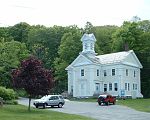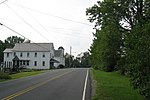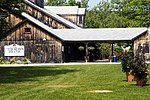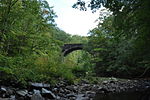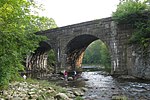North Becket Village Historic District
Becket, MassachusettsHistoric districts on the National Register of Historic Places in MassachusettsNRHP infobox with nocatNational Register of Historic Places in Berkshire County, MassachusettsUse mdy dates from August 2023

North Becket Village Historic District is a historic district encompassing the historic village of North Becket in the Berkshire hill town of Becket, Massachusetts. The village developed rapidly as the main economic and civic center of the town in a 20-year period beginning in 1841 with the arrival of the Western Railroad, and retains many fine examples of Greek Revival architecture. It was listed on the National Register of Historic Places in 1988.
Excerpt from the Wikipedia article North Becket Village Historic District (License: CC BY-SA 3.0, Authors, Images).North Becket Village Historic District
Main Street,
Geographical coordinates (GPS) Address Nearby Places Show on map
Geographical coordinates (GPS)
| Latitude | Longitude |
|---|---|
| N 42.3325 ° | E -73.082777777778 ° |
Address
Main Street 3433
Massachusetts, United States
Open on Google Maps
